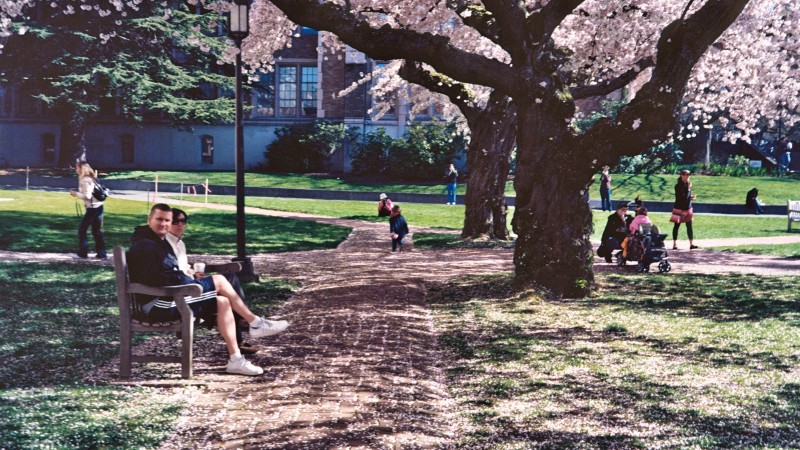Over the past couple weeks, I have taken journey with my resume. The process has taught me a thing or two that I wanted to share with you. My journey all started with a prompting from a LinkedIn post that asserted functional resumes are the most effective way for technical writers to showcase their talents.
The Chronological Resume
My resume had always fit within the more traditional chronological format, with a few functional aspects to better identify my diverse set of skills. I’ve always pictured my resume as a mathematical equation. It was about putting data into a formula in the correct pattern. The purpose of the resume is give the picture of your experience in as little as 30 seconds while providing enough depth to give a complete story of your career.
There are many advantages of the chronological resume. The most common advantage is its ability to meet expectations. Chronological resumes have a long history as the accepted format. This history makes it preferred by many traditional HR Managers. As Jonathan Milligan, an Executive Recruiter/Career Coach, states “most hiring managers are going to want to see a chronological resume.” When most resumes get a mere 30-second cursory glance before being accepted or rejected, meeting expectations will certainly help you get your foot in the door. Of course, there is something to be said about transcending expectations—more on that later.
Expectations aside, the chronological resume does have some practical advantages. The chronological resume outlines progress of skills. As shimmeringresumes.com points out “if your work history demonstrates increasing responsibility and professional growth,” the chronological resume will clearly highlight this. Furthermore, if your work experience includes large and well-known companies, a chronological resume will emphasize those big names.
And lastly, the chronological is the best place to start for those who are new to writing a resume. Since we all experience life in a linear chronology, our events are easiest to describe that way: much as movies and books are most often presented in chronological order. This is the natural order we live with, so it comes to us most naturally. Of course, that might equally be a reason not to use the chronological format. Some of the best movies and books of our time have become timeless pieces of art because they defied those expectations.
The Combination Resume
Before beginning my first indulgence into a completely new resume format, it’s important to note an oft identified, yet ill-defined resume format: the combination resume. A combination resume is essentially any resume that combines more than one format. The combination resume can bring in strengths of different resume styles or it can display too much information and overwhelm recruiters. It’s important to know the difference.
What I refer to as my chronological resume is, in fact, a combination resume. It has two main traits that put it in this category: a list of computer skills prior to my work experience, and a subdivided accomplishments section in my primary job. These two features allow me to take advantage, to some degree, of the functional resume format (which I’ll share with you in the next section).
The advantage of the combination resume is the ability to fine tune it to a particular position. According to examplesofresumes.org, It allows you to highlight both your “steady work history and diverse skill sets.” Most resumes are to some degree combinations of different formats. In my chronological resume, I was able to highlight skills that were not apparent in my job title as well as emphasize the breadth of my software experience.
The Functional Resume
Despite it’s strengths, the combined components of my chronological resume still lacked a clarity of purpose. I’d like to think that as with many great stories, my story was more compelling told outside the restraints of linear time. But the reality was simply this: I had a breadth of skills that make me highly flexible, but also make it hard for a recruiter to quickly see what I can offer. And on top of that, I was in the middle of a career shift, moving from education to technical writing with an eventual desire to do project management.
And a prompting from LinkedIn gave me the push that was needed. It was a simple discussion post that triggered my journey into my resume. The post said that functional resumes were “the top choice” for both new and established technical writers. I knew at the time that there was a stigma towards functional resumes, but I didn’t know why and I didn’t know what made a functional resume different. So, my research began.
The more I uncovered, the more the functional resume spoke to my circumstances and to the information in my current resume. The center point of the functional resume is a shift in how you represent your professional achievements. In the chronological resume, these are placed under the specific jobs where they were accomplished. In the functional resume, these are instead placed into skill sets: categories that identify what particular skill or job role these accomplishments are evidence of.
This resume style is particularly valuable to someone whose job titles do not clearly identify his or her skill sets. In my functional resume, you can see more clearly my role as a program manager, facilitator, technical writer, and teacher. Each of these skill categories has many job-related accomplishments, yet looking only at my job titles, you might not at first see what would make me apply for a job as a technical writer or project manager. In the words of learnhowtomakearesume.com, skill sets go “directly to the point” by showing the recruiter what skills you have in those areas. When targeted to a specific job, this can more directly show how you fulfill the qualifications for that position.
Unfortunately, the functional resume does have a weakness. You can use this resume to hide gaps in your skills. Since skills are not directly tied to jobs, you could include skills that have been dormant for more than ten years. Consequently, recruiters often treat functional resumes with mistrust. As Kathryn Vercillo from the Yellow Brick Road explains, “the most common reason to use this format is to hide employment gaps” so potential employers will often see this as an attempt to hide a flawed work history.
So, I found myself in a dilemma. I had a solid work history yet a diverse set of skills and I wanted to emphasize both without the appearance of hiding something behind my back.
The Creative Resume
This is when my resume search came across a category of resume that I had not previous heard of: the creative resume. My first introduction to this resume was an article I found from Creative Cartels. This article showed examples of resumes that were not written, but designed. They were unlike any other resumes I had seen thus far. Their main goal: to knock a recruiter’s socks off at first glance. Most of these resumes extended well beyond my skill level and would not have benefited me anyway. The most common field these resumes were targeting were graphic design. A field in which a creatively designed resume would be a strength. Many of these resumes while potentially impressing some employers, would not have fit my target audience.
Nevertheless, these resumes left me inspired. And not all of the resumes I came across were unrealistic for my purposes. For perhaps the first time, I began to see my resume not as a mathematical formula but as a technical document, the purpose of which was to display information concisely and aesthetically. Instead of writing a formula, I wanted a resume that was going to impress recruiters at first glance. I wanted it to be a unique representation of my experiences. Mark Babbitt, hiring manager and CEO of YouTern, holds a similar vision of the resume. In his article, Avoid The Resume Clone Wars, outlines three things that every resume should do:
- Identify the background, experience and skills relevant to the job you are seeking.
- Show why you want the job you are looking for.
- Prove that you are capable of filling the position you are seeking.
This new resume presented information in a more engaging manner by making use of graphics and color to help give a complete picture. It identified my skills with a higher level of specificity, giving specific 5-tiered skill levels for each. It also worked on the strengths of my functional resume by grouping accomplishments in similar skill sets while also maintaining the connection of those accomplishments to jobs as in my chronological resume.
The Targeted Resume
But, I wasn’t done yet. As you can see, my creative resume was packed with information, but it lacked a focus. What I needed now was to target this resume at specific positions I was seeking. So, I took two versions: one targeted to technical writing and one to education. By creating targeted resumes to specific positions, I can now give a unique yet complete picture of where I fit in that role. This allows hiring managers to make a quick 30-second review that fulfills several things:
- It gives a picture of how my skills fit into the job I’m seeking.
- It shows evidence that my accomplishments are linked to my work history.
- It gives a creative, aesthetically pleasing final product to impress recruiters.
So, take some time to examine your own resume. Think about how you show your abilities and experiences. Remember, the goal of this document is to convey information. So look at it from the perspective of what the reader will learn from it on a 30-second glance and from a more detailed study. And once you’ve gotten something you like, come back here and share it for some free feedback.




